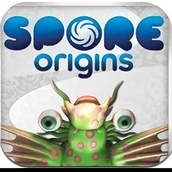golang使用time包获取时间戳与日期格式化操作代码
本篇文章小编给大家分享一下golang使用time包获取时间戳与日期格式化操作代码,文章代码介绍的很详细,小编觉得挺不错的,现在分享给大家供大家参考,有需要的小伙伴们可以来看看。
Time包定义的类型
Time: 时间类型, 包含了秒和纳秒以及 Location
Month: type Month int 月份.
定义了十二个月的常量
const ( January Month = 1 + iota February March April May June July August September October November December )
Weekday 类型: type Weekday int 周
定义了一周的七天
const ( Sunday Weekday = iota Monday Tuesday Wednesday Thursday Friday Saturday )
Duration: type Duration int64 持续时间.
定义了以下持续时间类型.
多用于时间的加减 需要传入Duration做为参数的时候.
可以直接传入 time.Second
const ( Nanosecond Duration = 1 Microsecond = 1000 * Nanosecond Millisecond = 1000 * Microsecond Second = 1000 * Millisecond Minute = 60 * Second Hour = 60 * Minute )
Location
在time包里有两个时区变量:
time.UTC utc时间
time.Local 本地时间
时间格式化
时间格式Time:
fmt.Println(time.Now()) // 输出: 2019-04-30 14:41:59.661602 +0800 CST m=+0.000225294 fmt.Println(time.Now().String()) // 输出: 2019-04-30 14:41:59.661826 +0800 CST m=+0.000448434
获取当前时间戳:
// 获取当前unix时间戳(秒) fmt.Println(time.Now().Unix()) // 输出: 1556615702 // 获取当前unix时间戳(毫秒) fmt.Println(time.Now().UnixNano() / 1e6) // 输出: 1556615702009 // 获取当前unix时间戳(纳秒) fmt.Println(time.Now().UnixNano()) // 输出: 1556615702009257000
字符串转化成时间戳:
x := "2018-12-27 18:44:55"
p, _ := time.Parse("2006-01-02 15:04:05", x)
fmt.Println( p.Unix() ) // 输出: 1545936295
将当前时间转成年月日时分秒格式:
t = time.Now()
fmt.Println(t.Format("2006-01-02")) // 输出: 2019-04-30
fmt.Println(t.Format("2006-01-02 15:04:05")) // 输出: 2019-04-30 14:43:26
fmt.Println(t.Format("2006-01-02 00:00:00")) // 输出: 2019-04-30 00:00:00
fmt.Println(t.Format("2006/01/02 15:04")) // 输出: 2019-04-30 14:43
fmt.Println(t.Format("2006/Jan/02 15:04")) // 输出: 2019/Apr/30 17:28
// 指定时间
t2 := time.Date(2019, time.November, 28, 11, 35, 46, 0, time.UTC)
// 返回 Time 类型
fmt.Printf("=>日期格式: %sn", t2.Format("06/01/02 15:04:05"))
// 输出: =>日期格式: 19/11/28 11:35:46
注意:
比如在PHP中,我们使用 date(‘Y-m-d H:i:s', time()) 可以输出时间 “2019-04-30 14:43:26”,比如Java里的 “new SimpleDateFormat(“yyyy-MM-dd HH:mm:ss”)”。
但是在Go语言中,“Y-m-d H:i:s”、 “yyyy-MM-dd HH:mm:ss”为特定的数字 “2006-01-02 15:04:05”是Go语言的创建时间,且必须为这几个准确的数字。
使用 time.Now().Date() 获取年月日:
// Date()返回三个参数: 年月日
year1, month1, day1 := time.Now().Date()
fmt.Printf("year: %v, type: %T n", year1, year1)
// 输出: year: 2019, type: int
fmt.Printf("month: %v, type: %T n", month1, month1)
// 输出: month: April, type: time.Month
fmt.Printf("day: %v, type: %T n", day1, day1)
// 输出: day: 30, type: int
补充:golang的time.Format的坑
golang的time.Format设计的和其他语言都不一样, 其他语言总是使用一些格式化字符进行标示, 而golang呢, 查了网上一些坑例子 自己查了下golang的源码, 发现以下代码
// String returns the time formatted using the format string
// "2006-01-02 15:04:05.999999999 -0700 MST"
func (t Time) String() string {
return t.Format("2006-01-02 15:04:05.999999999 -0700 MST")
}
尝试将2006-01-02 15:04:05写入到自己的例子中
func nowTime() string {
return time.Now().Format("2006-01-02 15:04:05")
}
结果返回正确. 询问了下, 据说这个日期是golang诞生的日子… 咋那么自恋呢…
相关文章
精彩推荐
-
 下载
下载孢子2生物进化中文版(Spores)
模拟经营 孢子2生物进化中文版(Spores)孢子2生物进化中文版让我们来做一回疯狂的博士,打造一个属于自
-
 下载
下载叫我万岁爷九游官方版
模拟经营 叫我万岁爷九游官方版叫我万岁爷带你体验当换地点感觉,全新的模拟手游大作让你开始一
-
 下载
下载梦回凤歌
模拟经营 梦回凤歌梦回凤歌手游中你将步入古代的宫廷纷争之中,本想度过美好幸福的
-
 下载
下载洋果子店rose最新版本
模拟经营 洋果子店rose最新版本洋果子店最新版是一款十分容易让人垂涎的开店经营类手游。游戏玩
-
 下载
下载明日大亨最新版
模拟经营 明日大亨最新版明日大亨手游,一个非常经典有趣的模拟经营类型的商战手游,在游















